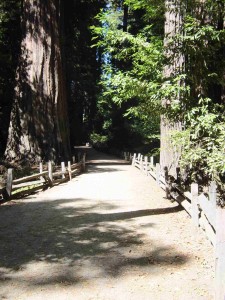“Reason has not come to repeat the universe but to fulfill it.” -Santayana
One of the great joys in life is when I get to work with clients around organizational, cultural, and community issues, sometimes we work in the woods, sometimes in the field, sometimes in a classroom, and sometime in an office environment. No matter where the training takes place, the focus is always the same: people, process and purpose. Over the years I’ve learned that if you pay attention to the people, then the process and the purpose will be achieved. Sometimes, the first contact with clients is like the first day of school, or your introduction to someone you haven’t met in your journey. What lies ahead is fresh, uncharted and new. These are the moments that entrepreneur Guy Kawasaki addresses in his delightful book, The Art of the Start, The times-tested, battle-hardened guide for anyone starting anything. That’s the passion which fuels my consulting work.
On training day, regardless of the location, be it indoors or outdoors, it all starts with the group. Years ago, my Experiential Education mentor, Arthur Wellington Conquest III (a mentee of Kurt Hahn, OB founder), the first African-American instructor in Outward Bound USA (OB) gave me a Michael S. Olmsted’s book entitled “The Small Group”. That was my introduction to the concept of “process”. Although, over time I’d accumulated numerous other books, that little paperback book remains my instruction manual for how groups work. Key to it all is the group process/group dynamic or some say, the Team Process: In 1965, Bruce Tuckman developed a simple four-stage model of team development that has become an accepted part of thinking about how teams develop. In his article, “Developmental Sequence in Small Groups,” Tuckman outlines four stages of team development: Forming, Storming, Norming, and Performing. What ever you call it, it’s the glue that binds a collection of assorted people into a team; building positive synergy through coordinated effort- out of which flows collaboration, culture competence, emotional intelligence, trusting relationships, and leadership.
Conversely, those same qualities disappear when groups grow from small 6-15 to large 16-30. In the transition from small to large, something dysfunctional happens to the group process. Malcolm Gladwell mentions this phenomenon briefly in his book Outliers: It seems that we’re hardwired to be able only to handle a certain amount of interpersonal dynamics. Additionally, unlike the primary group, the secondary, as Michael S. Olmsted puts it, “best serves professional organization, association, corporations, and nations.” The small groups are the human engine of change, and the building block of community. I realize that’s a bold and very powerful statement, but after 15 plus years training and running courses, that’s where my observations, experience and understanding of the process has brought me. (Collaboration)
It was from this insight that I leaned the process tradition, and studied the primary, and secondary group’s constructs. How to comprehend a series of actions, changes, and functions within group development, the primary, secondary group and later all other forms of groupings in which people organize themselves. How we’re organized, be it at in business, at play, or in community…we all know groups have a critical impact in what we do, and how we achieve. (Trust)
At this juncture you may be wondering just why we’re on this particular thought journey? Truth is, I’m currently assessing the prospect of changing my consulting brand, refocusing our teamwork trainings to highlight intensity, vigor and vast strength of small groups. Although, I thoroughly enjoy working with clients from corporate organizations, I’d like to flesh out some new ideas and engage training with smaller groups’ venues. That said, the good news is that said, makes thing work in the real world are small collaborations of people who are willing to take risk, and share the task. Similarly, small groups are the wellspring of community; they hold the promises and possibility for effective change in the workplace. In its active form, teamwork is the process of group work, and has always has been so. Teams have launched businesses, sustained communities, empowers the solution that Washington awaits, and has put a man on the moon! (Teambuilding)

